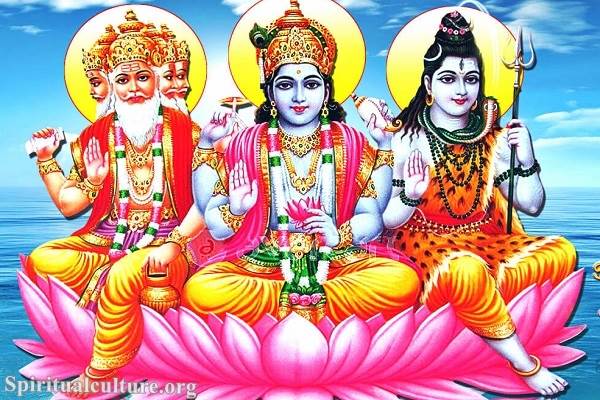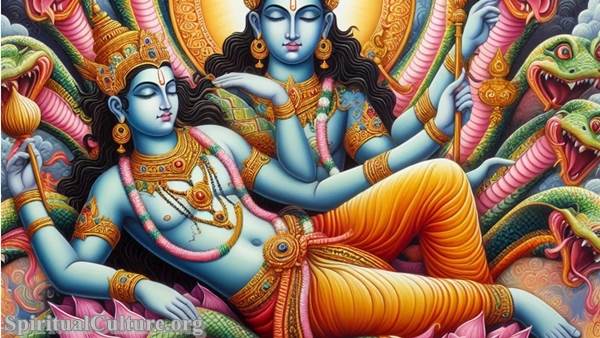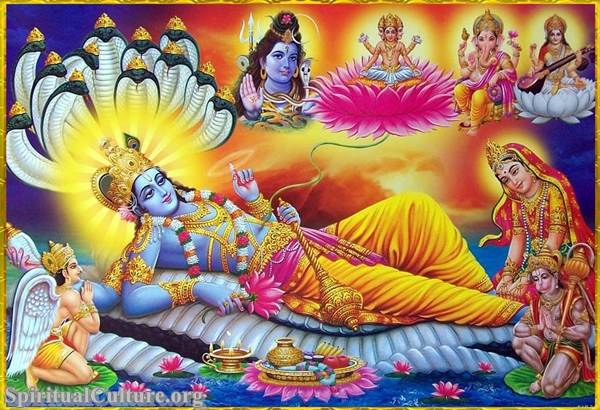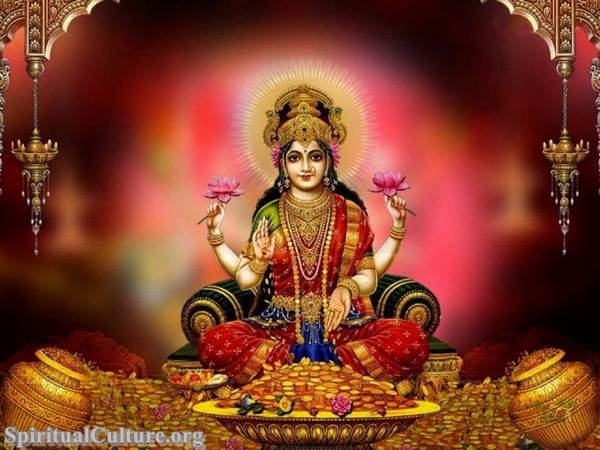The symbolism associated with Vishnu is rich and diverse, reflecting various aspects of his divine attributes and roles.
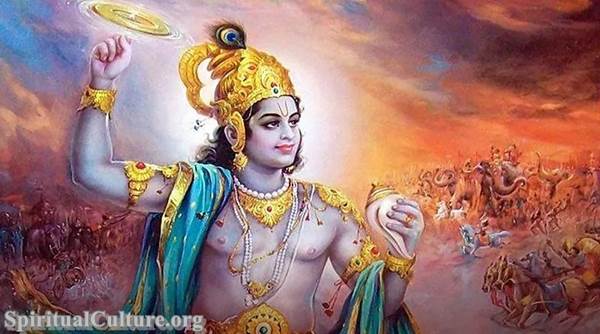
Here are some key symbols and representations associated with Vishnu:
Conch Shell (Shankha):
Vishnu is often depicted holding a conch shell called the Shankha. The conch symbolizes the primordial sound of creation, and when blown, it is believed to produce the sound “Om” – the cosmic vibration that represents the essence of the ultimate reality.
Discus (Chakra):
Vishnu is portrayed holding a discus known as the Chakra. This spinning disc symbolizes the wheel of time and cosmic order. It is also said to represent the power to cut through ignorance and maintain the balance of the universe.
Lotus (Padma):
Vishnu is often depicted seated or standing on a lotus flower. The lotus is a symbol of purity, beauty, and transcendence. It signifies how Vishnu remains untouched by the material world while upholding it.
Mace (Gada):
The mace, or Gada, is another weapon held by Vishnu. It represents the power of mental and physical strength and the force necessary to maintain order in the universe.
Lakshmi (Consort):
Vishnu is often accompanied by his consort, Lakshmi, the goddess of wealth, prosperity, and beauty. This pairing symbolizes the divine balance between preservation and prosperity.
Garuda (Mount):
Vishnu’s mount, or vehicle, is Garuda, a mythical bird-like creature. Garuda symbolizes speed, mobility, and the ability to soar above worldly challenges.
Adi Sesha (Divine Serpent):
Vishnu is sometimes depicted lying on the cosmic serpent Adi Sesha, which symbolizes the infinite cosmic ocean. The serpent also represents time, as it is said to balance the earth on its hoods while Vishnu rests on its coils during the cosmic dissolution.
Four Arms:
Vishnu is typically depicted with four arms holding different objects. These arms symbolize his all-encompassing power and presence.
Blue Skin:
Vishnu is often depicted with blue skin, which represents his transcendental and infinite nature. Blue is also associated with the infinite sky and the boundless cosmic ocean.
Vishnu’s Avatars (Incarnations):
Vishnu is believed to have descended to Earth in various incarnations, known as avatars, to restore cosmic order and protect dharma (righteousness). The most famous avatars include Rama and Krishna.
These symbols collectively convey the multifaceted nature of Vishnu and his role in maintaining balance, order, and dharma in the universe.
The worship of Vishnu is central to many Hindu traditions, and his symbolism is deeply ingrained in Hindu iconography and mythology.
